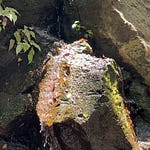I believe that I can quite safely say no other federal agency comes close to the brainpower of the staff at the National Aeronautics and Space Administration. Throw in an enormous dose of bravado combined with positive attitude toward the common mission to explore space (and what it means for our planet), and you have an invigorating workplace.
I was fortunate enough to serve a four-year-plus stint as NASA-TV Senior Special Projects Producer, starting in 2008. I was involved in the photography and public distribution of the scores of camera feeds involved in shuttle missions. I, with the help of a brilliant editor and an equally talented graphic artist, also created videos and programs that made NASA-TV actually worth watching, even for the non-space geek. My two largest projects were to create a documentary for the 40th Anniversary of the Apollo moon missions, and the other was a celebration of the 50 years of NASA that included stories of all the aviation, as well as rocketry and space missions that have enriched humanity.
What would you do? See the full trailer and get your copy of the book. Just click here.
[Launch Time-Shift software_Set the Earth date to 16 February, 1962]
I was not yet six years old when I watched John Glenn climb aboard a giant, (hopefully) controlled bottle rocket the size of a water tower. They lit the fuse. (Seriously! With a machine called a NASA Standard Detonator (NSD). It is not unlike the spark wheel on a regular lighter.) It took Mr. Glenn less than five hours to circle the globe three times and safely return to earth in a spectacular moment caught on live television.
I was hooked. I cut out every newspaper story about the moon race and pasted then into scrapbooks. I wrote my own story about the pictures I kept. I cried when the Apollo I mission crew of Gus Grissom, Ed White II, and Roger Chaffee died in that horrible launch pad fire. I cried again, this time tears of joy, as did Walter Cronkite on national television, when Neil Armstrong and Buzz Aldrin landed on the moon. It wasn’t just the manned missions that captured my imagination. A phenomenal array of robotic spacecraft have been flung into space from this planet and each one (Yes, even the failures) has contributed to our knowledge base in ways that defy belief.
[Launch Time-Shift software_Set the Earth date to {Nominal}, January 2025]
Yes, NASA pays for itself in hardware innovations created for these missions. You know all about the thousands of products that originated from NASA technology. But the part I like best is rarely spoken about, even within NASA. The wealth of knowledge contained in the brains of this team is incalculable. And to no one’s surprise, some of the oldest hands still on deck have some of the most valuable knowledge that modern computers don’t understand.
I highly recommend you read a Pocket Story, written by Richard Hollingham.Titled “The Ancient Technology Keeping Space Missions Alive,” it is an amazing tale of how some of the oldest spacecraft still serving their missions decades after their expiration dates are being kept in a modern computer loop. Imagine having a microscopic onboard RAM Memory of 2 MB aboard a spacecraft that is millions of miles away. Oh, and it’s operating on Windows 98 PC software. And it’s running out of fuel. But you don’t really know that because there is no “fuel gauge”. And the conversation involves a lot of waiting because of the time it takes for the signals to get from here to that robot, and back.
This is a skillset that the younger generations never needed to learn. Call it Computer Code History 101. But because the people of NASA are willing to postpone their retirements in deference to their mission’s conclusion, the knowledge still catalogued in these ripening minds is still on the job.
Now, these pioneers of computerized space travel are teaching new engineers how to fly these dinosaurs of space travel using computer software that dates back to the 1960’s. Someday, an AI computer will learn how to mix the science, art, and voodoo it takes to fly these craft. But for now, the knowledge pass-down to the incoming generations is a gift that needs to be respected.
In my time at NASA, I got to rub elbows with Nobel Prize in Physics laureate John C Mather, Neil Armstrong, John Glenn, Gene Cernan (the last man to step on the moon), and countless more heroes and geniuses.
My role came to a natural end for me when the Shuttle missions were cancelled. An enormous part of my work had just been moved to the attic. But in the days before that transition, walking through the doors of NASA Headquarters in Washington, D.C. every day (unless we were on mission somewhere) is a highlight my life, of which I am enormously proud.
Please join the conversation by sharing this post, taking advantage of the free subscription, and leaving a comment. Also, please pick up a copy of one or more of my books, all available on amazon. You’ll find descriptions and links, as well as many of my documentary videos, on my website at garywestphalen.com.












Share this post